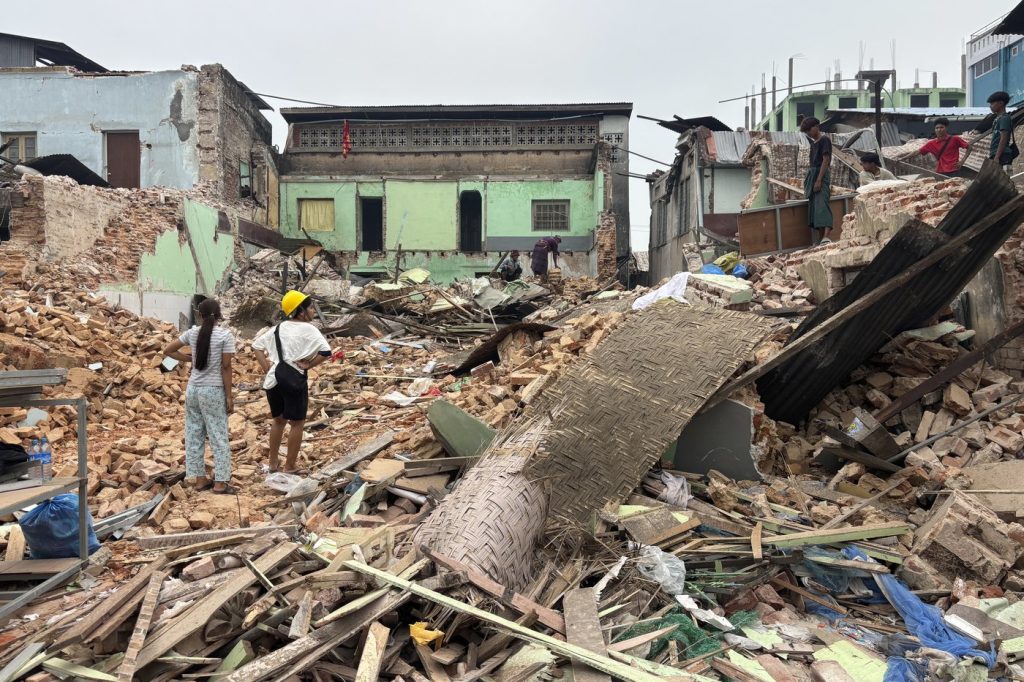BANGKOK (AP) — Three weeks after a devastating earthquake struck Myanmar, basic services have yet to be restored in the hardest-hit areas. Emergency workers face continuous aftershocks and a lack of resources while working to recover bodies and clear debris, as reported by humanitarian services.
The U.N. Office for the Coordination of Humanitarian Affairs (OCHA) issued a situation report stating that frequent aftershocks continue to shake central Myanmar almost daily. This ongoing seismic activity has intensified fear and uncertainty among affected residents, disrupting response efforts and exacerbating the strain on already limited resources and services.
The catastrophic twin earthquakes, which occurred on March 28 and registered a magnitude of 7.7, were centered near Mandalay, Myanmar's second-largest city. The quakes affected a vast area, damaging six regions and states, including the capital Naypyitaw. The disaster has deepened an already critical humanitarian crisis fueled by the country’s civil war, which has displaced over 3 million people and left nearly 20 million in need, according to United Nations estimates.
A report in the state-run Myanma Alinn newspaper indicated that the death toll from the earthquake has risen to 3,726, with 5,105 individuals injured and 129 still missing. It is noted that 1,975 international rescuers and medical professionals from 25 countries collaborated with local teams, successfully saving 653 people and recovering 753 bodies from the rubble.
The extent of the damage is staggering, with Myanma Alinn highlighting that 65,096 houses and buildings, 2,514 schools, 4,317 monastic living quarters, 6,027 pagodas and temples, 350 hospitals and clinics, 170 bridges, 586 dams, and 203 sections of the country’s main highway were affected by the quake.
The Myanmar Fire Services Department reported on its Facebook page that rescue workers are currently engaged in relief efforts, searching for survivors, and clearing debris from larger structures. They have also returned valuable belongings, such as jewelry, cash, and important documents, to their rightful owners. Rescuers have recently recovered two bodies from collapsed buildings in Mandalay.
According to an official from the Myanmar Rescue Federation (Mandalay), the current priority is to clear bodies and debris from collapsed larger buildings and assist the earthquake survivors. This official, who requested anonymity due to fears of arrest, mentioned that the daily recovery of bodies has diminished to one or two.
Another emergency services worker in Mandalay indicated that the number of rescue teams operating in the area has been gradually declining, as many international teams have returned home after their mission to find survivors was considered complete. Local rescue personnel are now primarily focused on clearing debris and aiding those affected by the disaster.
The United Nations Development Program previously estimated that at least 2.5 million tons of debris—approximately 125,000 truckloads—need to be removed from the affected areas. This estimate was based on remote sensing analysis using satellite images.
UN-Habitat, the U.N. agency specializing in human settlements, announced that its staff, in collaboration with the Myanmar Engineering Society, are assessing the widespread damage to buildings in the earthquake-impacted regions. In Naypyitaw, most rescue operations have ceased, and damaged government buildings remain unrepaired in their post-earthquake state. Residents have largely completed the debris clearing in their residential areas.
A recent report in Myanma Alinn disclosed that Senior General Min Aung Hlaing, head of the military government, informed his Cabinet members during a meeting that Naypyitaw’s urban layout would be redesigned. Constructed at great expense in 2006, Naypyitaw was built next to an area once inhabited primarily by farmers and is known for its extravagant government structures and under-utilized road infrastructure.










